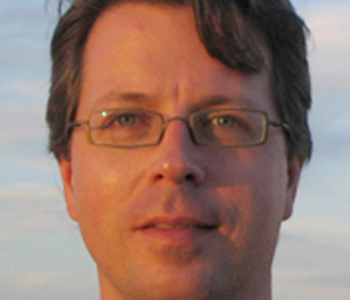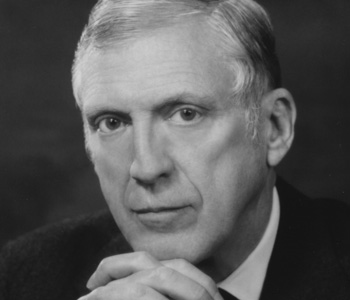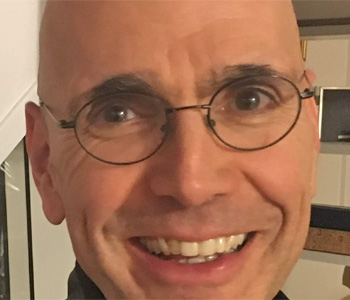Richard Ned Lebow
Forbidden Fruit: Counterfactuals and International Relations
Princeton University Press
348 pages, 9 x 6 inches
ISBN 978 0691132907
Counterfactuals are “what-ifs.” They change a feature of the past in the expectation of changing the present. The antecedent (the change introduced in the past) is connected to the consequent (the change in the present) by a chain of logic.
Counterfactual argument is no different in these respects from its “factual” counterpart. Depending on the context, it may also be rich in supporting evidence. We give credence to either kind of argument on the basis of its assumptions, chain of logic and consistency with evidence.
Counterfactuals nevertheless differ from “factuals” in that they create non-existent worlds. We can never really know if such worlds could or would have come about by the means we use to create them.
We employ “minimal rewrite” counterfactuals routinely: small, credible changes of reality close in time to the outcome they wish to alter. We also tend to mutate features of context that appear unusual. If Susan was in an automobile accident while driving to work, we reason it might have been prevented if she had left at the usual hour, not ten minutes late, which caused her to drive faster than usual.
People frequently invent counterfactuals to buttress their self-esteem and self-confidence, reduce anxiety and evade responsibility for negative outcomes. Scientists use counterfactuals to frame hypotheses and probe causation. If we say that “x” causes “y,” other things being equal, “y” should not occur in the absence of “x.” When cases are unique or show inadequate variation in outcomes, we must imagine alternative outcomes and conduct thought experiments to reason how they might have come out.
This is essential in history and international relations where the tape of events cannot be rewound and run millions of time to see what variation might occur. We must introduce variation through comparative analysis and counterfactuals.
So counterfactuals are widely used by physical and social scientists. Historians are on the whole are resistant to counterfactuals, but cannot write good history without them. They smuggle counterfactuals into their narratives—often unreflexively and badly.
One of the goals of Forbidden Fruit is to develop a set of protocols for conducting counterfactual thought experiments in history and international relations. I identify conditions that good counterfactual arguments must meet and the generic problems they encounter. I devise methods for using counterfactuals to probe causation but also ways of undercutting these arguments, with the goal to understanding the robustness of the outcome we would change. I offer as an historical example the phenomenal success of Western civilization in the modern era and ask what minimal rewrites of political, military, religious, social or scientific developments might have prevented it. My goal in doing so is not to create an alternate world but to understanding the causes behind and the contingency of the world in which we live. Subsequent case studies conduct counterfactual explorations of the origins of World War I and the end of the Cold War with the same end in mind.
In the second section of the book I don my psychological hat and conduct a series of experiments and surveys using policymakers, historians and international relations scholars as participants. I demonstrate how resistant these professionals are to accepting the contingency of the political world but also how easy it is to manipulate their estimates of contingency. The very people who should be thinking about causation in more complex ways are often extremely reluctant to do so, especially when contingency would call into question their preferred theories or views of the world.
The third section of the book turns to literature. Psychologists speculate that counterfactuals are credible because of their vividness: they draw people into scenarios and make them appear realistic by providing small details of the kind we associate with our world. I start with a story of my own, about an alternate world in which Mozart lives to sixty-five and, as a result, neither World War nor the Holocaust occur. My heroine tries to imagine what the world would be like if Mozart had died at her partner’s age, thirty-five—the age at which Mozart actually died. This is a deliberately far-fetched counterfactual, although I present a compelling chain of logic linking Mozart’s longevity to the peace of Europe by virtue of its consequences for Romanticism and the political goals of minorities within the Austro-Hungarian Empire. I use the story as one of my experimental instruments to evaluate the role of vividness in counterfactuals.
I also analyze Philip Roth’s The Plot Against America, which uses counterfactuals very effectively to honor his parents—by creating a situation in which their response would reveal their commitment to their children and America. The counterfactuals, which lead to a pro-Nazi Lindbergh administration, also show the contingent nature of American-Jewish identity. Roth’s novel makes us reflect upon truths we take to be self-evident.
A final chapter explores the relationship between so-called fact and fiction and “factual” and counterfactual arguments. These binaries are meaningful but so full of tensions and overlap that they are best understood as continuums. Good literature, psychology, history and international relations should not brush these tensions under the rug but exploit them for creative purposes.

One of my goals is to develop a set of protocols for conducting counterfactual thought experiments in history and international relations. Not to create an alternate world but to understanding the causes behind and the contingency of the world in which we live. I identify conditions that good counterfactual arguments must meet and the generic problems they encounter.
History and social science largely rest on Humean causation: the belief in causes that can be established by something approaching a constant conjunction between two events, one envisaged as a cause and the other as its outcome.
The social world is open-ended and non-linear, both of which render Humean causation of limited value. By open-ended I mean a world in which events in one domain, say the political or social, can influence events in another, like economics, and perhaps even the understandings people have about how such a domain works. Non-linear refers to the interaction of multiple causes which have effects that are more than additive, and may be responsible for bringing about major transformations.
The social revolution of the 1960s, to offer an example, was brought about by the interaction effects of the rise of a youth culture (due to the creation of a market niche and the development of rock and roll), the invention of the birth control pill, the civil rights movement, and the Vietnam War. All these events had independent chains of causation in diverse domains but interacted in non-linear ways to transform the social-political context of 1960s America.
Counterfactuals provide a critical tool for exploring complex causation of all kinds and I use my two historical case studies of World War I and the end of the Cold War to demonstrate how both were the result of highly contingent non-linear confluences. Despite the common belief that both developments were the result of deep causes and all but inevitable, counterfactual historical research makes it apparent that these events, not merely their timing, were highly contingent. Such contingency has profound implications for the kinds of theories we think capable of making sense of our world.
I first became involved with counterfactuals because American security policy during the Cold War rested on a counterfactual: if only Britain and France had stood firm early on against Hitler, World War II and all of its horrors could have been prevented.
As Stalin and Khrushchev were assumed to be the linear descendants of Hitler, deterrence was considered the appropriate response. No effort was made to test this counterfactual against rich and available historical evidence. Deterrence, moreover, was confirmed tautologically. Its failures were never attributed to the strategy and the responses it provoked but rather to the putative failure to apply it forcefully enough. Such “learning” in Washington and Moscow was responsible for the chain of crises culminating in the 1961 Cuban missile crisis, the closest the superpowers came to destroying themselves through a nuclear war.
Counterfactuals can have enormous rhetorical appeal and be made partially self-fulfilling. This is all the more reason we must study them and do so in the most scientific manner possible.
Good books draw in readers in their opening pages. I hope Forbidden Fruit does the same.
In those pages I justify my choice of title. I also explain the need for counterfactuals and offer examples of just how committed policymakers, historians and international relations scholars are to the inevitability of important events. They are so to the point of obvious absurdity. And they also believe, against all evidence, that big events must have big causes.
Readers must wonder why otherwise intelligent people do this and why all of us want to see the world as explicable and partly predictable. A bit unsettled, intellectually and emotionally, the reader, I hope, will be interested in learning more about the way the world actually works and why we hold to and defend simplistic and often logically contradictory understandings about our world.

Psychologists speculate that counterfactuals are credible because of their vividness: they draw people into scenarios and make them appear realistic by providing small details of the kind we associate with our world. I start with a story of my own, about an alternate world in which Mozart lives to sixty-five and, as a result, neither World War nor the Holocaust occur.
The significance of this book is two fold.
The first is methodological, a word and concept that might seem far-removed from real-world concerns. But methods guide our thinking and can lead us into counterproductive, even disastrous, political, economic and social policies. By developing the counterfactual method, I aspire to improve policy analysis.
More importantly, counterfactuals provide alternate worlds from which we can observe our own from distance and think with more detachment about it and about us. This is essential to probe not only how our world works but who we are and how we have become ourselves.




We don't put paywalls. We don't distract you with ads. We don't sell your data.
Please help to keep this running!